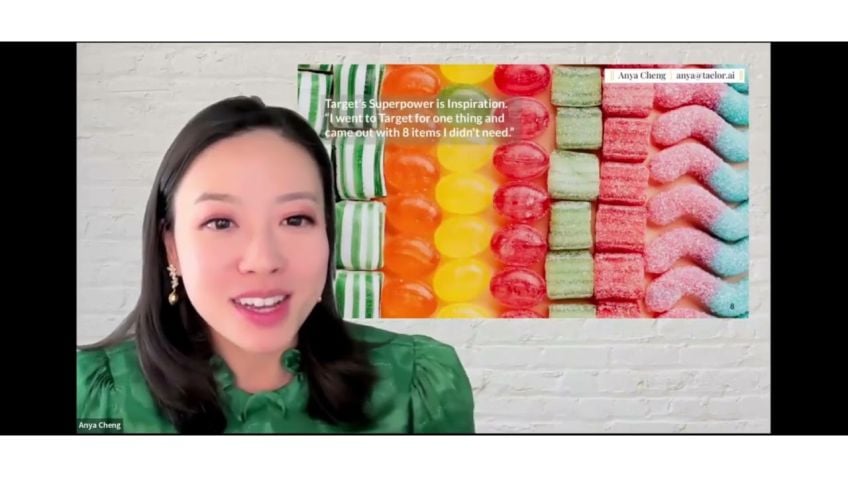Hacking the Gap Between Business and Technology by Basia Coulter
The Power of Cross-Functional Collaboration: Bridging the Gap
Good day wherever you are in the world! I'm Basha Coulter, a business hacker at Globe Business Hacking, focusing particularly on life sciences. Today, I'm thrilled to talk about one of the most significant challenges in business – the gap between business and technology, and how cross-functional collaboration can bridge this gap.
The Challenge of Change
We live in a world where change is constant, and technology adoption is on the rise. However, studies show about 70% of change programs fail, and a staggering 84% of companies fail at digital transformation. These statistics highlight the importance of addressing the gap between business and technology.
Bridging the Gap with Cross-Functional Collaboration
One of the critical keys to overcoming these challenges is cross-functional collaboration. This process typically involves the business and tech sides working together to answer two fundamental questions: Why are we doing this, and how will we get there? By bridging this gap, companies can expect outcomes such as quicker time to market, improved customer experience, and improved employee experience.
The Future of Cross-Functional Collaboration
As we look towards the future, I firmly believe that the next step is cross-organizational collaboration. Using the example of clinical trials during the Covid-19 pandemic, I showcase how this collaboration looks like.
Case Study: Clinical Trials
When the Covid-19 pandemic presented challenges for traditional in-person clinical trials, organizations had to rapidly adapt. They leveraged technology, such as mobile apps and remote monitoring devices, to interact with patients in a decentralized manner.
However, the multiplication of data sources and management processes created a new challenge. As we advance, we must develop standardized data governance and management processes to make clinical trials not only patient-centric but also data-driven.
This level of complexity means single organizational cross-functional collaboration is no longer enough. Instead, we require cross-organizational collaboration where different organizations bring their unique skills to the table.
Join the Conversation
As we wind up, I would love to hear from you about your experiences with cross-functional collaboration. Your contributions can help in shaping this vital field and bridging the gap between business and technology.
Conclusion
In conclusion, whether you're in tech or business, remember that we all share a common goal: customer value. Let this be our guiding force as we work across disciplines to drive innovation and transformation. And remember, "The language of cross-functional collaboration is universal". Thank you for joining, and feel free to reach out at any time. Have a wonderful conference!
Video Transcription
Good morning. Good day. Good afternoon, good evening, depending on where you are in the world. Uh My name is Basha Coulter. Uh I'm really super excited to be here today.I wanna thank you for joining this session and I want to thank the Women Ted conference for creating this space for us to, to share experiences and ideas. I am a business hacker for Life Sciences at Globe business hacking. Really uh for us means reinventing industries and I focus on life sciences because um I have a master's degree and a phd in Neurobiology and I used to do research in the academic setting. I left uh that life sometime back and made my way into technology consulting. And what really excites me today is the possibilities that technology creates for rethinking, how we go about research and development, including for example, clinical research. So I wanna tell you a little bit about that, but I wanna tell you also about um ways in which we can bridge the gap between business and technology, which I see as one of the biggest obstacles to successful transformation, particularly in large organizations. So let's get started.
We're gonna talk briefly about the change which we all uh experience constantly as and which we know accelerates all the time. We'll take a look at alignment on customer value and cross functional collaboration as a conduit for bridging the gap between uh business and technology.
And then I'm gonna share my perspective on where I think cross functional collaboration is going changes here. It's accelerating. I don't have to tell any of you um that we're experiencing societal change, climate change, technological change, which happens on its own, but it also is a facilitator uh for adoption uh and adaptation to all the other types of change that we're experiencing. But are we ready for it? So it's interesting and this is just a small sample of statistics. Uh We could probably find a lot more. And if you look at these, what we see is the spending on technology is rising, the adoption of various technologies is on the rise, senior leaders within organizations embrace not only adoption of technology but a need to invest in technology. So all these things are happening at the same time, we see statistic like statistics like this one. So 70% of change programs fail. For example, this by the way, is a statistics that can be traced back uh all the way to 1993. So it's not new uh and not much has changed in that regard. And I think most of us have that experience, that change is really hard, innovation is really hard. Another interesting statistics from Forbes, uh 84% of digital transformation of companies fail at digital transformation.
And then you look at a survey uh that Harvard business review published in 2018 and you see the top key key obstacles to innovation in large organizations include one politics, turf wars and no alignment, two cultural issues. And these two in my opinion, are very closely related to one another. Because if you have a culture that does not foster cross functional collaboration and maybe sometimes even impede collaboration between different functions and different parts of the organization, then no wonder that there is no alignment and that people begin to drive their own agendas and uh become political about that.
So let's take a look at how alignment on customer value and cross functional collaboration could create a bridge. This is what uh it often feels like for me when, when I come uh to work with organizations, particularly large organizations, uh sometimes uh we are hired by the business side of things, sometimes we are hired by technology and we walk into the room and it feels like people are just not talking to each other across organizational uh units.
So how might we reverse the dynamic and foster conversation and collaboration between business and technology? Uh I think that it all starts with focusing on the company mission and in this case by company mission, I mean, how the company creates and delivers value for the customer.
So, you know, we might debate um what the role of a corporation is within a society. There are different points of view on that. But regardless of those points of view, I think most people would agree that unless there is a customer who is interested in the product or a service that a company brings to the market, there is no real reason for that company to uh exist. So as companies work to create and deliver that value to customer, they uh build strategies uh in order to get there in order to deliver on that mission. And what building strategy means is answering two fundamental questions. Why are we doing this and how are we gonna get there? Sometimes it may feel like the why question resides primarily within the business domain because it is the business that's mainly concerned with creating and delivering value to the customer. And on the other hand, it may sometimes also feel like um the how question is the domain of technology, particularly today where creation and delivering of value to the customer is largely facilitated and enabled by technology. But I think that a better way to think about it is to think about business and technology working together on answering both the why and the how question and then what happens when we have developed a strategy and we're ready to start executing against it.
Well, the teams that are executing And here you see an an example of a development team, engineering team, but you could translate that really into any execution team within an organization. The team needs to have needs to be composed in a way that like that cross functionality.
So both the business and the technology acumen are represented and not only that the execution team must stay connected to the strategy layer that usually happens um through subject matter experts who represent either technology or business or sometimes both the complexity grows greater.
When we have situation that there are multiple initiatives that need to be co ordinated uh across the enterprise and that cross functionality, business and technology working together on answering the why and how question must also be reflected in the governance structure across initiatives.
When companies work that way, a few primary types of outcomes can be seen faster time to market improved customer experience, higher customer retention, improve employee experience and reduced employee retention. And in fact, the customer experience and employee um experience are often very interrelated.
There is a growing evidence to demonstrate that better employee experience correlates with better customer experience. So let's talk about what the future of that cross functional collaboration could look like. And I'm gonna talk about it by using an example of clinical trials and how clinical trials have evolved as a result of the COVID-19 pandemic. So, a clinical trial is a study that assesses the safety and efficacy of a medical treatment. So that could be a drug that could be a medical device that could be any kind of intervention. And in a traditional clinical trial, there is a study site, a hospital or a clinic and patients come to that place to that physical location, to parti participate, they have to come to enroll, they have to come to undergo treatment, they have to come to receive a physical examination and so forth.
So when the COVID-19 pandemic hit patients of course, were unwilling to go to hospitals and clinics to participate in clinical trials and also restrictions were put on in-person interactions. So clinical trials were uh quite literally threatened to come to a stop because without patients, there could be no clinical trials. And I'm not talking just about clinical trials for the COVID-19 vaccines. I'm talking about all clinical trials. The majority of clinical trials are conducted in cardiovascular diseases and cancer. All those studies could have come to a stop because there was no way for patients to participate in clinical trials. So organizations that um sponsor and run clinical trials quickly responded to that by leveraging technologies that actually already existed that enabled them to interact with patients in a decentralized manner so that patients didn't have to come to a location, they could participate remotely what people and companies started seeing also is that this decentralized model started solving some of the business problems that traditional clinical trials suffer from.
So for example, low uh patient enrollment, low engagement, long timelines, um high cost, these types of challenges um it turns out are to varying degrees solved by decentralization of clinical trial operations. And in many ways, because now we're talking about bringing the trials to the patient rather than a patient having to come to a physical location to participate. So in many ways, decentralization of clinical trials became synonymous with the patient centric approach to clinical trials.
There is um a little more nuanced to this than that. I just want you to be aware that there is a lot of debate to what extent uh this is really fully a patient centric approach. But I think for the purpose of our discussion here today, we can think about decentralized clinical trials. Um as patient centric, now I mentioned that this decentralization of clinical trials was facilitated by technology. And indeed, uh we created many opportunities and ways to collect and receive data in the course of a clinical trial. So now patients could enter their data, they could respond to surveys on mobile apps. There were a remote monitoring device is that were employed a huge number of data sources. Now, the data governance and management processes have not kept up with that multiplication of data sources and data input. So organizations, a lot of them today uh have to process that data and manage the data through a lot of manual processes. So they are very much data overwhelmed the next step of the evolution of clinical trials needs. Therefore, to include a standardized way of thinking about data governance and data management. So that clinical trials become not only patient centric but but truly data driven.
And I think that when that level of complexity is at play, the cross functional collaboration that we talk about within a single organization is no longer sufficient. That level of complexity requires cross functional collaboration. That is cross organizational where certain organizations in this case, life sciences companies, for example, represent the business side of things and other organizations bring that technology a to the table and as an ecosystem, we together solve uh problems of high complexity such as uh decentralization of clinical trials.
So I wanna um I think we have about five minutes left. I wanna leave you with this thought of the future of cross functional collaboration being cross organizational collaboration. I wanna thank you for joining today. If you have any questions or comments, please um enter them in the chat. I would be happy to answer. I invite you to, to connect outside of this conference or so um as it continues to um take place and maybe we can find ways to collaborate any questions or comments. How, how does cross functional collaboration play out within your work environment? Does the culture of of your company support cross functional collaboration or do you feel that um business and technology work in silos and don't really uh work towards the same goals. Anyone here who has experienced the benefits of cross functional collaboration? Have you seen it in action?
Have you seen how different um the outcomes of the work that we do might be when we work together? Versus in silos any specific outcomes that you could point to that you would attribute to cross functional collaboration versus uh working in isolation. You can put your comments or questions in the chat. That's a great comment. Never assume that what you do in it will be understand. And, and I think part of this is learning to develop a language to communicate the work that we're doing in technology to the business that um lack of communication and and lack of understanding sometimes goes bo both ways. Any examples of um ways to, to communicate what you do to the business. Yes, I think it's good to think about um the fact that anything that we are familiar with or experts in is simple to us. It may be a completely foreign subject to people in a different discipline. That's why I think that finding ways to talk about our work in a language that can be understood by other disciplines is part of working towards that cross functional collaboration. Thank you, Esther for that.
I I think it is important to remind ourselves when we work on the technology side of things that we are developing technology and tools in order to deliver value to the customer, right? So that we're not developing them um in a vacuum just for the sake of developing them. But they serve a purpose and that pers purpose is to de to deliver value to the customer, either internal or external, right? So the business is our internal customer, but there is also an extern external customer who ultimately is the receiver of the value that the company is um bringing to the market. I think that is focusing of the on the customer value can be a very powerful way for all the participants to come together and align on a single direction and collaboration. Thank you, Esther. Well, thank you everyone for joining. And if there are any other questions or comments that you would like to share offline, feel free to reach out at any time. And I wish you all uh a wonderful rest of this conference because there are some really exciting sessions and talks that are happening over the next three days. So I hope you take full advantage of it. Thank you.





